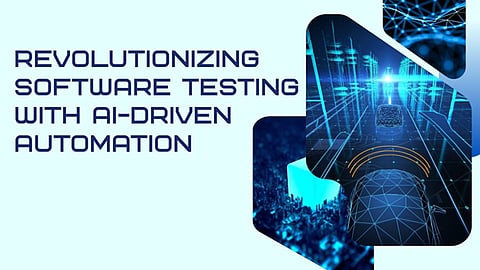

In recent years, the integration of artificial intelligence (AI) into software testing has brought about significant improvements in the quality assurance landscape. The innovative contributions in this field by software quality experts like Jainik Sudhanshubhai Patel have redefined the traditional approaches to test automation. AI-powered test automation is now paving the way for smarter, faster, and more efficient testing processes, fundamentally altering how software applications are verified and validated.
Over the past decade, the shift from manual testing to sophisticated automation frameworks has been pivotal in enhancing software quality. As modern applications become more complex, traditional testing methods have struggled to keep up with the pace of development. This is where AI-driven test automation comes into play. By leveraging technologies such as machine learning (ML), natural language processing (NLP), and computer vision, AI offers solutions to the major challenges faced by conventional testing methods.
Unlike rule-based automation, AI-driven solutions are adaptive, resilient, and capable of learning from their environment. They enable more effective test case generation, predictive defect analysis, and real-time automation adjustments. These improvements have drastically reduced the brittleness of traditional test suites, which often fail due to minor updates in the user interface or back-end changes.
One of the biggest issues in traditional test automation is the high cost of maintaining test scripts. In fact, maintenance can consume up to 42% of the total resources allocated to test automation, primarily due to frequent application updates. AI-driven test automation, however, offers self-healing capabilities that drastically reduce this maintenance burden.
Without any human intervention, systems can, for example, solve locator failures, UI changes, or environment mismatches automatically. Dynamic element location algorithms in AI-powered systems have been able to recognize UI components, even after massive redesigns, with over 94 percent accuracy. Such an advancement saves time and reduces maintenance costs by a great margin; some companies reported such savings to the tune of $423,000 every year per application.
AI’s predictive capabilities also play a crucial role in transforming software testing from a reactive process into a proactive one. Predictive defect analysis uses historical data and code metrics to forecast potential failure points before they cause issues. By employing machine learning models that analyze factors such as code complexity and previous bug patterns, AI can predict defect clusters with remarkable accuracy.
Organizations utilizing AI-driven testing have reported up to 32.7% higher defect detection rates compared to traditional testing approaches. Moreover, AI helps optimize resource allocation by focusing on the most critical test cases, which reduces the overall testing effort and ensures that high-risk areas are prioritized.
Another key area where AI-driven automation shines is in performance testing. Traditional load testing methods often struggle to simulate real-world traffic patterns accurately, leading to inefficient testing and missed performance bottlenecks. AI, on the other hand, adapts to production environments, dynamically adjusting test scenarios based on historical usage data. This allows for more realistic traffic simulation, closer to actual application workloads.
The future of AI in test automation lies in self-learning systems, which continuously improve their performance over time. These systems can autonomously expand test coverage, adapt to changes in application environments, and optimize test execution without human intervention. Self-learning frameworks use unsupervised learning techniques to adapt to new scenarios, making them increasingly efficient with each test cycle.Organizations employing these systems have experienced up to a 22.4% increase in defect detection rates and a 54.8% reduction in maintenance effort. This level of automation ensures that testing is always aligned with the latest application updates, without requiring constant human oversight.
There are several far-reaching economic and operational benefits provided by AI-driven test automation. By cutting down on maintenance, increasing the detection of defects, and further improving the optimization of resources, AI-driven frameworks help software teams divert their attention to innovation rather than troubleshooting.
In conclusion, the use of AI in test automation has eased many of the burdens traditionally associated with testing, setting the stage for adaptive, intelligent, and efficient testing frameworks. By taking over mundane tasks, reducing the continuous upkeep of scripts, and assisting in the active management of defects, AI-driven systems are fast becoming an indispensable toolkit in software quality engineering. As the technology advances, it will take on a greater role in ensuring software is reliable and resilient in this fast-track era wherein updates are an everyday occurrence. The contributions of experts like Jainik Sudhanshubhai Patel are a significant step towards fully autonomous, self-optimizing quality assurance systems that will keep innovations going in the tech world.
